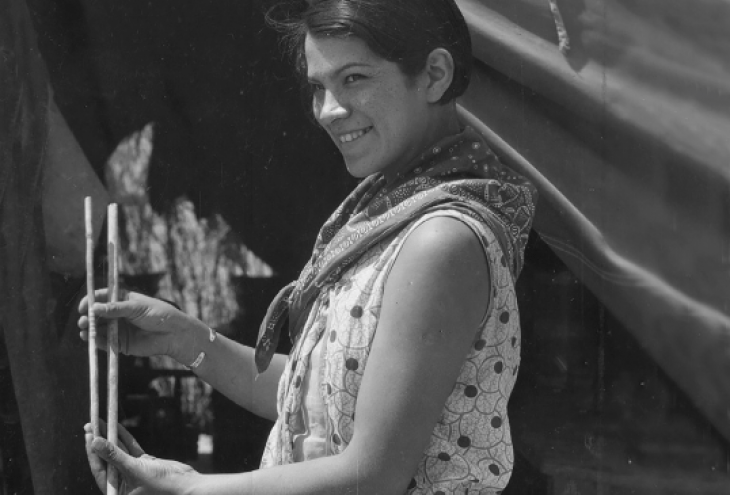Long considered the first female Native American archaeologist, Bertha Parker Pallan Cody led an intriguing life. She was born in 1907 to Seneca folklorist, archaeologist, musicologist, and historian Arthur Parker and Abenaki actress Beulah Tahamont. She was also the great niece of Ely S. Parker, engineer, attorney, and the first Native American commissioner of Indian affairs (and inspiration for the highest AISES award).
After Cody’s parents divorced, Bertha moved with her mother and her mother’s parents, also actors, to Los Angeles, the new motion picture capital. Cody worked in show business for a time, but gave up the show biz life when her uncle by marriage, archeologist Mark Raymond Harrington, hired her as a secretary and cook on his digs. Cody learned the science on the job, in the field. She was involved in some of the 20th century’s significant discoveries, including working at a site promoted as having the earliest evidence of Native peoples on the continent. At Gypsum Cave in Nevada in 1930, she was the one who found the skull of an extinct giant ground sloth next to ancient human tools. Cody also excavated ancestral Pueblo sites, including Scorpion Hill, and published her findings based on her careful documentation and photography.
By that time, Harrington was director of the Southwest Museum, and many of the pieces Cody found were put on display. Cody published several papers while working at the Southwest from 1931 to 1941 as an archaeology assistant, and later as an archaeologist and ethnographer. Cody’s studies ranged from Yurok lore to California baby baskets and Southwestern art. Dr. Margaret Bruchac, Abenaki, wrote in 2005 that Cody was “conscientious about recording the names of the Native people she interviewed, going so far as to give them credit as authors and co-authors.” That practice was unusual among investigators of the time.
After leaving the Southwest Museum in 1941, Cody returned to show business as a technical advisor on projects depicting Native Americans. In the 1950s, Cody and her third husband, Italian actor Espera Oscar de Corti, “Iron Eyes Cody,” also hosted a television program about Native history and folklore.
Still, most of the accomplishments and many records of this remarkable self-taught scientist remain hidden. Accounts typically name her as wife, daughter, or niece, making little if any mention of her own achievements. After Cody passed away in 1978, even her tombstone was inscribed simply “Mrs. Iron Eyes Cody.”











